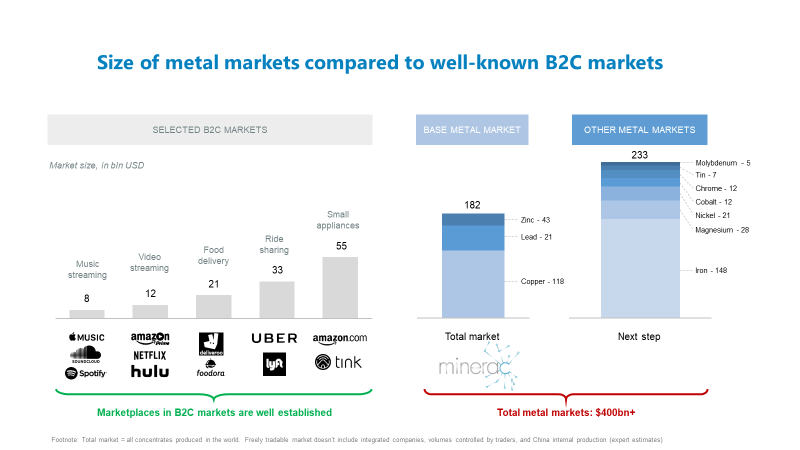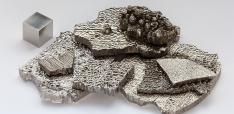4 Ways Blockchain will Transform the Mining and Metals Industry

The mining and metals industry is a critical component of the global economy. However, many operational and commercial practices remain inefficient and antiquated, leading to critical data omissions, security vulnerabilities and even corruption.
Blockchain technology has the potential to fundamentally change the way the mining industry and connected supply chains operate. Blockchain is an immutable and cryptographically secure archive of records stored on a distributed ledger, which uses smart contracts built on the Ethereum platform. The technology facilitates stakeholders connected on a chain to securely exchange critical trade documents, such as bills of lading and letters of credit, via the use of smart contracts. The benefits of blockchain technology link perfectly to the commercial and operational aspects of mining, metals and other industries in the broader value chain such as shipping.

1. Fewer paper exchanges
To say that trade in minerals and metals is a paper-heavy process is an understatement. In shipping, for example, cargo is still for the most part only redeemable against a paper bill of lading. To make matters even more cumbersome, in shipping, whether in bulk or by container, there are multiple intermediaries forwarding information and documents via email and fax. Yes, fax. In some instances, cargo is held up at port because the physical paperwork needed to redeem it has not yet arrived. Similar examples can be found across the wider mining and metals value chain, from the letters of credit required for trade finance to the surveying certificates issued by laboratories certifying the grade of a commodity such as copper.
2. Faster transactions and broad adoptability
The synchronised nature of blockchain will allow ecosystem participants to be notified of trade developments at the same time. This will result in swifter consensus on additional trade terms, such as a shipment schedule, between parties. In addition, the exact nature of information logged on the blockchain, combined with synchronicity, should reduce the number of disputes and make their resolution more straightforward.
Blockchain solutions are applicable to all stakeholders connected to the broader value chain, from financial institutions and ship operators to surveying laboratories, warehouses and many others. It is hoped this will drive innovation and compliance beyond mining and smelting and into connected industries that might otherwise have lacked the resources to develop technology to address these needs.

3. Compliance
Mining and metals companies, despite significant improvements in the areas of sustainability and compliance, must continue to innovate and remain up-to-date. A recent report by CNN suggested that child labour was still a prominent issue in relation to the mining of cobalt, for example. Socially responsible, tech-empowered consumers are already scrutinizing the circumstances connected to minerals and metals, such as cobalt, found in their cars and smartphones. The influence these stakeholders currently have on the opinions of their peers through social networks is already evident, and the prominence of this tendency is likely to increase. An additional dimension and benefit of blockchain can be leveraged to develop applications that address compliance, transparency and accountability.
Because the ledger in projects such as the new blockchain consortium Minerac (short for “Mineral Chain”), which I lead, will be shared, all parties involved in a transaction can be confident the data is up-to-date. This will reduce errors and create greater overall transparency, eliminating the potential for malevolent actors to take advantage of loose record keeping.
4. Sustainability
Blockchain can also be used to develop comprehensive end-to-end tracking of ores and minerals. The process would require sealed bags or containers of concentrates and ore to be stamped with a unique identifying ID that will subsequently be logged on the blockchain. The ID will contain information on the quality and quantity of each parcel of ore or concentrate, as well as being continually updated with an ongoing timeline tracking and logging movements. The initial applications of this are twofold; first, it will provide clients with peace of mind when transporting high-value minerals, and second; it will help confirm that the minerals being purchased are from compliant and conflict-free regions. However, the risk that concentrates and ores could be mixed with materials of undetermined origin prior to being sealed in a bag and assigned an ID remains a possibility.
The future
The future of both blockchain and the digital economy is still undetermined; however, the technology is evolving quickly and so far it is clear that there are compelling use cases for the mining, metals and connected value chains. Early adoption and experimentation will at the very least better prepare organisations for what is set to be a fundamental part of business technology going forward, but could also establish pioneering new frameworks for conducting and managing sustainable, international trade flows.
Minerac will be jointly developed and led by blockchain venture studio ConsenSys and Open Mineral, a cloud-based marketplace for metal concentrate trade..
This post first appeared on the World Economic Forum's Agenda blog.
Image credit: Tom Blackwell via Flickr (CC BY-SA 2.0)


